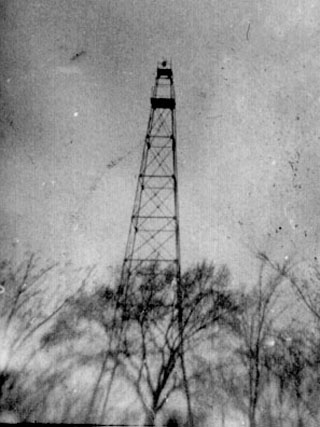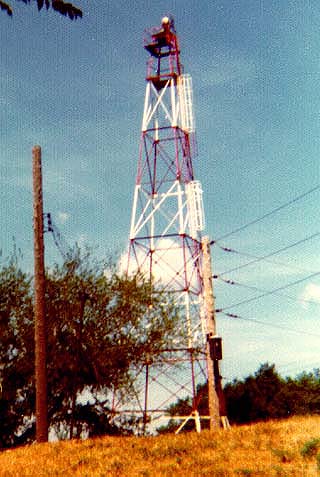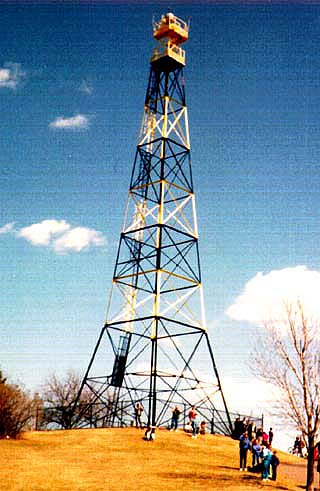
Its beam flashes across the sky every five seconds, 720 times an hour. The light is visible for miles and has been guiding planes to safety for 70 years. The Mounds Park beacon, or as it is formally named, the Indian Mounds Park “Airway” Beacon, has been a landmark in Dayton’s Bluff since 1929.
At one time over 600 of these beacons defined nighttime airway corridors across America. The Mounds Park beacon was part of the system that defined the route between St. Paul and Chicago. But electronic guidance equipment eventually made the beacons obsolete and, just like their lighthouse counterparts, most of them eventually went dark. Our beacon is the last of its kind.
It was a marvel in its time and is still impressive by today’s standards. The tower is 110 feet tall. The beacon itself is 24 inches in diameter.

It was designed by the City of St. Paul’s Bureau of Bridges and built by the St. Paul Structural Steel Co. During a refurbishing in 1994-95, the tower’s original black and chrome-yellow color scheme was restored, replacing the red and white colors that had graced the tower in modern times. The mid-90s restoration was accomplished through a coalition of groups including the Metropolitan Airports Commission, the FAA, the State Historic Preservation Office, the Indian Affairs Council, the State Archeologist and the City of St. Paul.
The beacon has been an attraction ever since it was built. At least three postcards, probably issued in the 1930s, featured the beacon, showing Indian burial mounds in the foreground with the St. Paul skyline in the background.
Besides guiding airplanes, our beacon also welcomes trains, boats and, of course, weary automobile commuters as they return to Dayton’s Bluff from the far reaches of the Twin Cities in the dark of night.

Observing the beacon is also a very good way to determine prevailing weather conditions. As the beacon sweeps clockwise through the atmosphere, its beam can appear nearly invisible, extremely bright or anything in between, depending on what is in the atmosphere that night.
The beacon’s most spectacular display can only be seen a couple of times a year. Watch its beam when the temperature is near zero and there is an ice fog in the air. As the beacon rotates a hazy glow will be seen in the sky until the beam is pointing directly towards your position. Suddenly, a brilliant shaft of light will appear to shoot straight up into the sky and disappear just as quickly, only to appear five seconds later when the beacon swings around again.
No matter what the sky conditions, Dayton’s Bluff ‘s own Old Faithful will be there, lighting up the sky every five seconds for years to come just as it has for the past 70 years.
And just to make sure the beacon looks its best, it received a new coat of paint in June 1999.
Here are three postcards from the 1930s that featured the beacon
This page was last updated in 1999, courtesy of the University of Minnesota